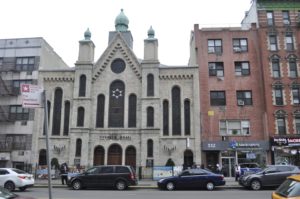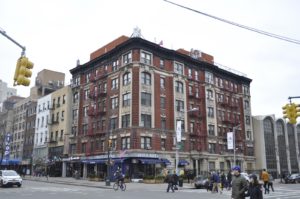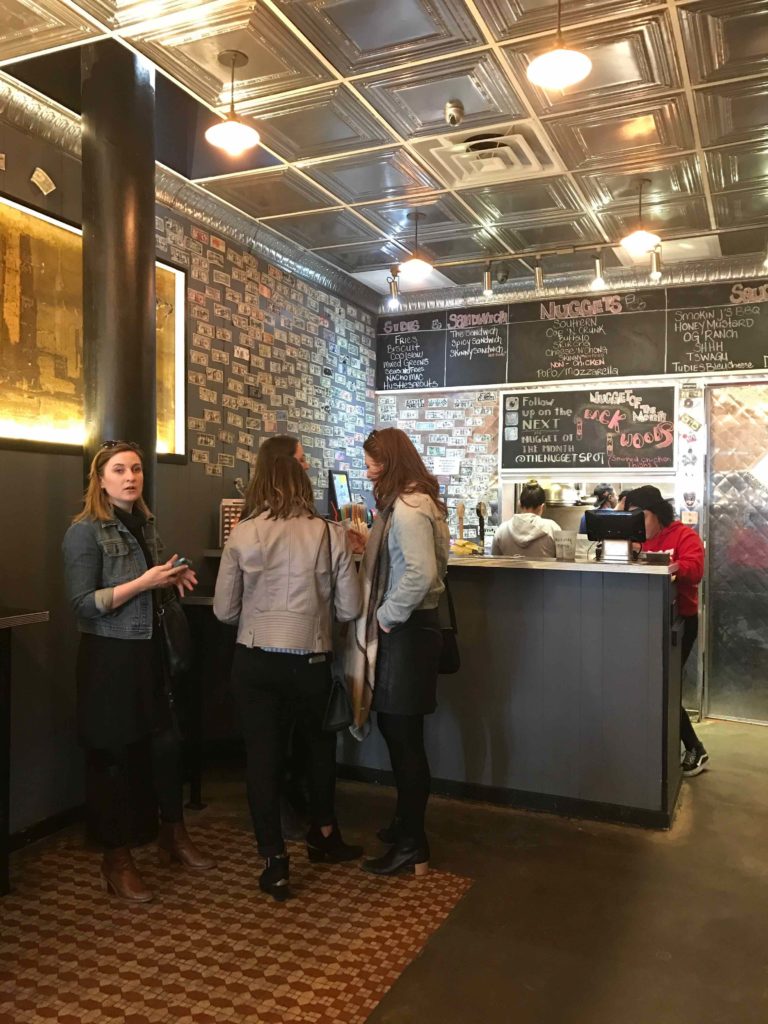For a native New Yorker, there is a combination of nostalgic elation that comes along with a stroll through the blocks of 14 street. Whether you are a native or a tourist, you cannot help but notice that New York City’s 14 street is filled with vendors bagging fruits, people running to catch the M14d bus and tipsy people exiting bars.
In the midst of all this, it’s easy to move through space without noticing the panhandlers and homeless people in the area. According to the Coalition for the Homeless, there were 62,692 homeless people on January 2017 in New York City. In response to the visible amount of homelessness on 14th street, homeless deterrence infrastructure were installed. The architectural products are intended to discourage homeless people from sleeping in the area. There are spikes on the edges of some buildings, including the New York Eye and Ear Infirmary of Mount Sinai, the Vitamin Shoppe and even I-HOP. Bus benches have divisions on the seats, hindering people from sleeping on them. The caged trash bins prevent people from digging inside for food scraps.
These designs were intentional and understanding of processes of urbanization, their conditions and consequences are essential in deconstructing the problem. Henri Lefebvre argues that architecture is tied up with the practices of everyday life, capital, and power. Urban analysis begins as a process where we observe the design and structures of space. We need to critically think about the function and the purpose of the design the contemporary city. Who designed it? Why is it shaped in this way? Why is it located here? Etc.
Next time you find yourself on 14 street (or anywhere in the modern city), take a look around. Chances are there is homeless-deterrent technology all around you. The technology could even be viewed as a form of state-sanctioned violence to render homeless people less than humans- to invisibilize them. The ability to impose these sentiments through design reflects the interests of the city. Homelessness is shameful for a city. In order to enact “desirability” and “respectability”, spikes exist. Profit and the aesthetics of wealth overshadow the issue of people suffering due to poverty.
The average person would be oblivious to the power relations at work in their surrounding environment. The first step would be conscious about the designs of infrastructure and then be proactive about organizing against it. This is a public concern and we need to have better approaches to unpack and dismantle oppressive urban structures.







 Tammany Hall was a political institution founded in 1789. The Tammany Society, who met there, was an anti-Federalist group. The group played a major role in NY politics and in controlling the Democratic Party vote starting in the 1790s. The group is known for bringing charges of corruption against William M. “Boss” Tweed, who was convicted for embezzling millions of dollars from the city’s government. The building was demolished in 1926 (along with the Academy of Music) and replaced with the Consolidated Edison building. It is now the Raymour and Flanigan Furniture store.
Tammany Hall was a political institution founded in 1789. The Tammany Society, who met there, was an anti-Federalist group. The group played a major role in NY politics and in controlling the Democratic Party vote starting in the 1790s. The group is known for bringing charges of corruption against William M. “Boss” Tweed, who was convicted for embezzling millions of dollars from the city’s government. The building was demolished in 1926 (along with the Academy of Music) and replaced with the Consolidated Edison building. It is now the Raymour and Flanigan Furniture store.



















